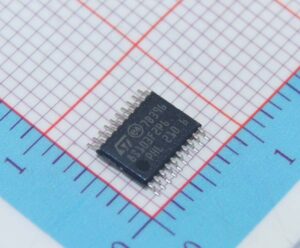 Clone MCU STM8S103F2 Flash Source Code
Clone MCU STM8S103F2 Flash Source Code
Clone MCU STM8S103F2 Flash Source Code from original Microcontroller STM8S103F2 by unlocking processor stm8s103f2 tamper resistance system and then extract embedded firmware from flash and eeprom memory;

The 8-bit STM8 core is designed for code efficiency and performance.
It contains six internal registers which are directly addressable in each execution context, 20 addressing modes including indexed indirect and relative addressing and 80 instructions.
Architecture and registers

clonar o código-fonte flash MCU STM8S103F2 do microcontrolador STM8S103F2 original desbloqueando o sistema de resistência à violação do processador STM8s103f2 e, em seguida, extrair o firmware incorporado da memória flash e eeprom;
- Harvard architecture
- 3-stage pipeline
- 32-bit wide program memory bus – single cycle fetching for most instructions
- X and Y 16-bit index registers – enabling indexed addressing modes with or without offset and read-modify-write type data manipulations
- 8-bit accumulator
- 24-bit program counter – 16-Mbyte linear memory space
- 16-bit stack pointer – access to a 64 K-level stack
- 8-bit condition code register – 7 condition flags for the result of the last instruction
Addressing
- 20 addressing modes
- Indexed indirect addressing mode for look-up tables located anywhere in the address space
- Stack pointer relative addressing mode for local variables and parameter passing
Instruction set
- 80 instructions with 2-byte average instruction size
- Standard data movement and logic/arithmetic functions
- 8-bit by 8-bit multiplication
- 16-bit by 8-bit and 16-bit by 16-bit division
- Bit manipulation
- Data transfer between stack and accumulator (push/pop) with direct stack access
- Data transfer using the X and Y registers or direct memory-to-memory transfers